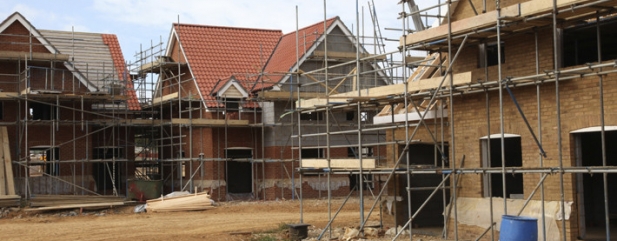Archived article
Please note that tax, investment, pension and ISA rules can change and the information and any views contained in this article may now be inaccurate.
Bright spots amid construction gloom

The construction industry has endured its worst quarter in four years in the wake of the Brexit vote. Dig deeper in the data and you’ll find reasons to stay positive on parts of the sector.
The 1.1% decline in construction volumes flagged by the Office for National Statistics (ONS) in the July to September period is less acute than its forecast in October for a 1.4% fall in construction activity in the third quarter.
Volumes were up 0.3% month-on-month in September. Signs the market has stabilised are backed by purchasing managers’ index surveys
for September and October which show the rate of growth accelerating to its highest level since March.
The industry will also be hoping for support in the upcoming Autumn Statement (23 Nov).
Much of the quarterly decline in the construction sector can be attributed to a 3.6% fall in repair and maintenance work. That’s evident in profit warnings across the builders’ merchants and products sectors.
SIG (SHI), Travis Perkins (TPK) and Grafton (GFTU) have all issued disappointing trading updates in the past quarter or so.
On the flipside, most housebuilders have signalled their resilience post the EU referendum. Taylor Wimpey (TW.) and Crest Nicholson (CRST) are the latest to say demand is holding up.
The main concern we draw from Taylor Wimpey’s release is a guided 3% to 4% increase in build costs in 2016. The increase reflects a lack of skilled labour to keep up with the demand for new homes. This issue could be exacerbated by the Brexit vote if it becomes more difficult for the industry to recruit from the EU. (TS)
Important information:
These articles are provided by Shares magazine which is published by AJ Bell Media, a part of AJ Bell. Shares is not written by AJ Bell.
Shares is provided for your general information and use and is not a personal recommendation to invest. It is not intended to be relied upon by you in making or not making any investment decisions. The investments referred to in these articles will not be suitable for all investors. If in doubt please seek appropriate independent financial advice.
Investors acting on the information in these articles do so at their own risk and AJ Bell Media and its staff do not accept liability for losses suffered by investors as a result of their investment decisions.

 magazine
magazine








